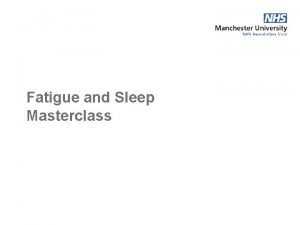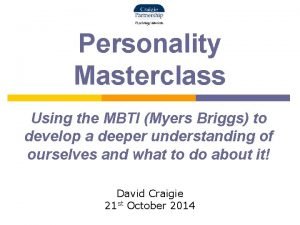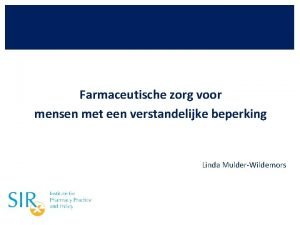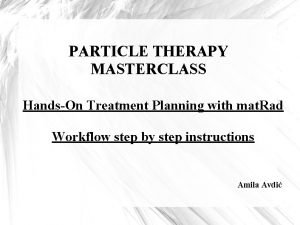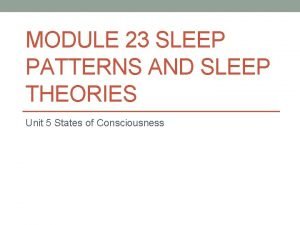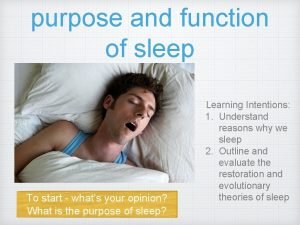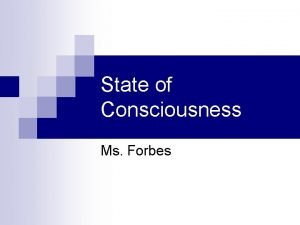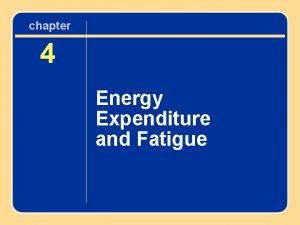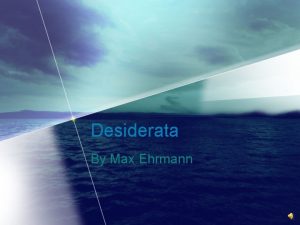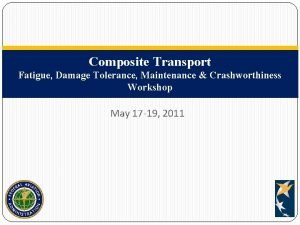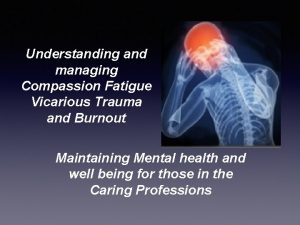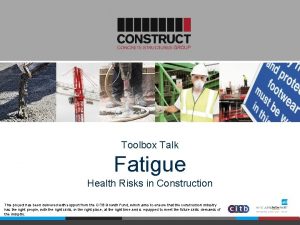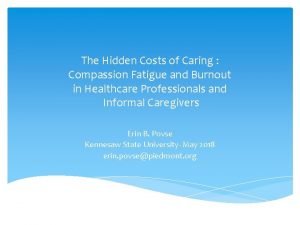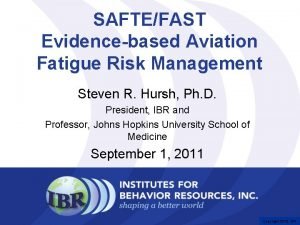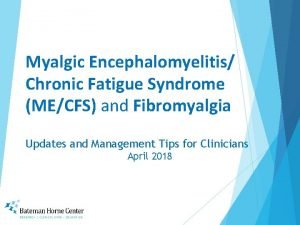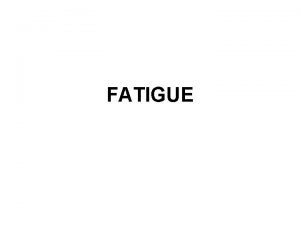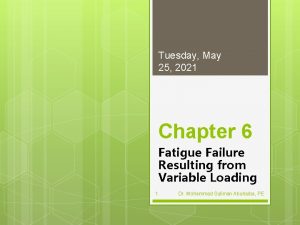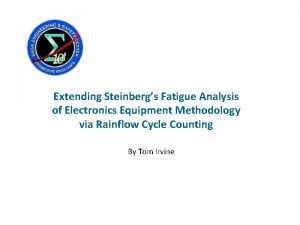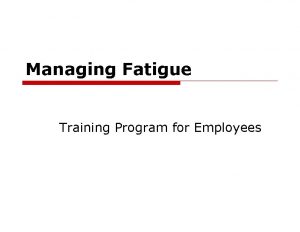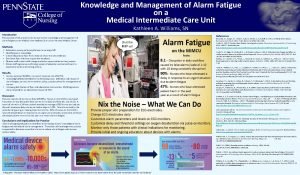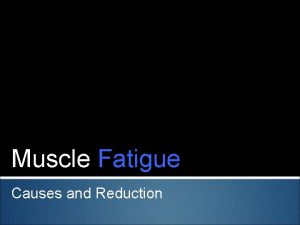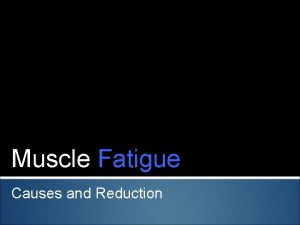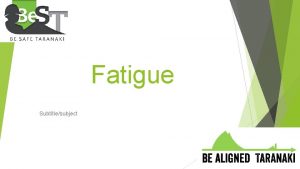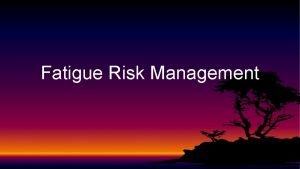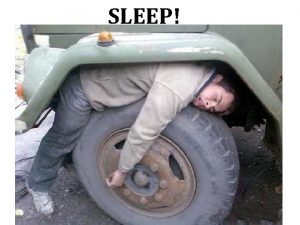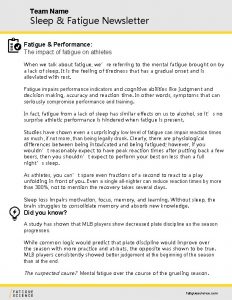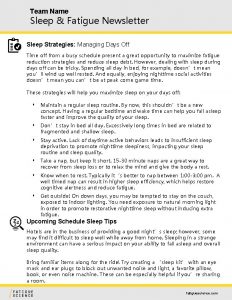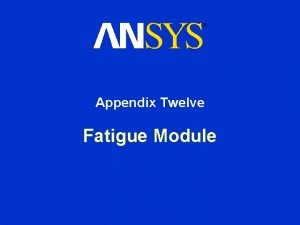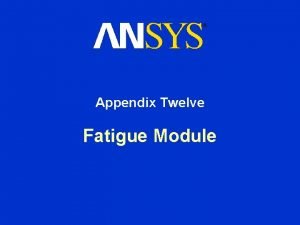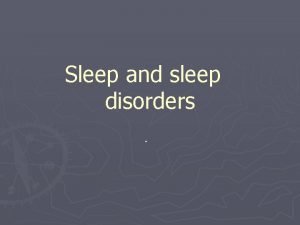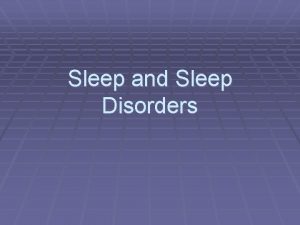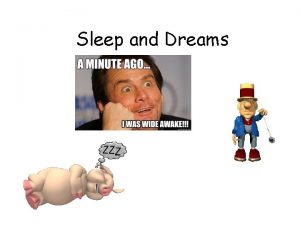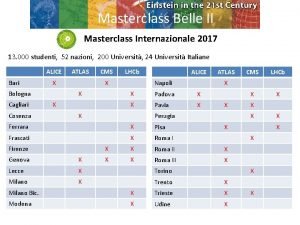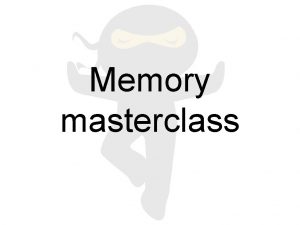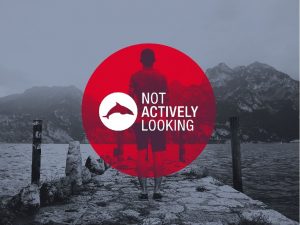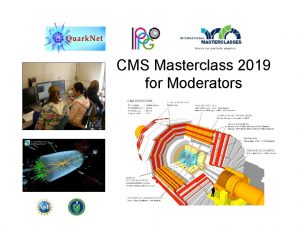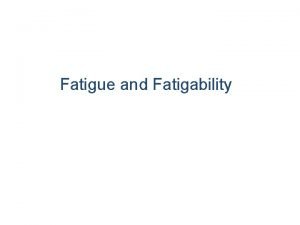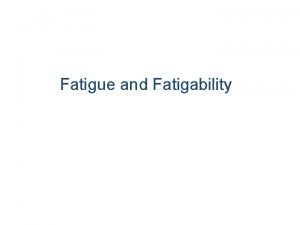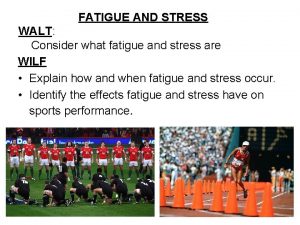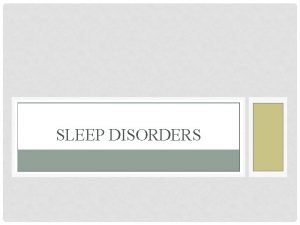Fatigue and Sleep Masterclass Overview Importance of sleep
































- Slides: 32

Fatigue and Sleep Masterclass

Overview Ø Importance of sleep Ø Sleep and stroke recovery Ø Supporting patients with sleep issues Ø Defining post stroke fatigue including a review of the research Ø Challenges with measuring fatigue Ø Discussion around fatigue management and the advice we give

Post Stroke Fatigue

What is post stroke fatigue?

Defining the problem • There are many definitions for such a subjective impairment • Post Stroke Fatigue (PSF) has been defined as: ‘a subjective experience of extreme and persistent tiredness, weakness or exhaustion after stroke, which can present mentally, physically or both and is unrelated to previous exertion levels’ 1

Challenges in defining PSF Many patients will be experiencing PSF but never use the word fatigue or tired PSF presents differently in different patients Some of the symptoms can be explained by other factors

Challenges in defining PSF may present differently at different stages of patient journey The stroke population is heterogeneous and therefore research is very challenging By nature of the problem researching this population is challenging

How big is the problem? • The Royal College of Physicians (RCP 2016)2 identifies PSF as a problem to be considered in the assessment and treatment of stroke patients. • Estimates of the prevalence of PSF vary greatly from 2375% of stroke patients 3. • A survey of patients 1 -5 years post stroke revealed 51% experienced fatigue and 43% of those didn’t have support for this 4

How big is the problem? • A 2015 study found that fatigue in working age stroke patients was associated with poor functional outcomes 5. • It has been suggested that PSF is listed as the most disabling symptom in 40% of stroke patients 6.

Research overview

Search Strategy • A search of the literature was carried out using the CINAHL, Pub. Med and cross referencing from literature. The search was narrowed to 2010 – 2015. • The search terms STROKE, FATIGUE and INTERVENTION* yielded 99 results on Pub. Med and 46 results on CINAHL. • A number of systematic reviews and a Cochrane Review were excluded in order to enable closer examination of the original literature. I have chosen 4 papers to critique as part of this presentation •

Lerdal et al 2011 • They aimed to investigate the • Prevalence of PSF in acute phase in 1 st ever stroke patients • Relationship between PSF and other variables • They found: • Severe fatigue in 24% of their sample and moderate in 33% in their sample • Decreased physical function, increased depressive symptoms and pre-stroke fatigue had positive correlations with PSF

Lerdal et al 2011 Critique: • Scale: FSS not validated tool in stroke 7. To trigger for severe fatigue pts had to score more than 5 and other studies have used 4 as a threshold. This may have resulted in under reporting of severe fatigue • Sample: 2 weeks post 1 st stroke- other variables could be influencing results such as infection/medical instability and this was not accounted for in exclusion criteria. Only 115 patients • Bias: question regarding pre stroke fatigue- risk of recall bias • Generalisability: exclusion criteria limits this and exclusion of patients not speaking Norwegian

Duncan et al 2015 • Looked at: • Association between PSF and reduced physical activity (PA) • They found: • Incidence of fatigue reduced incrementally at 1, 6 and 12 months • Decreased step count was linked with higher FAS scores at 1 month (p<0. 001) • Decreased PA (p<0. 002) and increased anxiety (p<0. 001) at 1 month independently predicted increased PSF (FAS scores) at 6 and 12 months

Duncan et al 2015 Critique • Scale: FAS is validated tool for stroke 7, 9 • Sample: first month post stroke but 45 drop outs • Bias: Did not take into account other forms of PA and incomplete data from step counter and FAS score at 6 and 12 months • Limitations: Results for anxiety and PA as predictors do not show causality • Generalisability: exclusion criteria limits this. Only 136 patients

Clarke et al 2012 • Looked at: • Comparing benefits of fatigue management education programme compared to general stroke education control (GSE) • They found: • Both groups had decreased FSS from baseline to postintervention assessment and maintained at 3 month follow up (p=0. 020) • FMG group had greater decrease in FSS (p=0. 086 not significant) • Able to suggest power calculation for future study

Clarke et al 2012 Critique • Scale: FSS not validated for stroke 7 • Sample: Only 16 patients across a wide time span post stroke • Bias: researcher bias in carrying out assessments as not blinded to allocation. Treatment manualised to decrease bias. • Limitations: no sham control and other factor may have contributed to results such as effects of group • Generalisability: limited as very small sample and conducted in New Zealand

Zedlitz et al 2012 • Looked at: • comparing Cognitive Therapy (CO) alone with Cognitive Therapy and Graded Activity Training (COGRAT) • They found: • Fatigue scores decreased in both groups • More patients in COGRAT group showed clinically relevant decrease in CIS-f (drop of 8+ points) than those getting CO only (p=0. 002). • 6 Minute Walk Test (6 MWT) improved in COGRAT group more than CO group (p=<0. 001)

Zedlitz et al 2012 Critique • Scale: CIS-f and SOL-f not found to be a validated measures in literature about PSF 7, 9 • Sample: Variability within sample in onset time (mean was 3. 9 years) recurrent and first stroke. The mixture in terms of chronicity may have had an impact on results • Bias: “wash out” period, patients randomised and assessors blinded • Limitations: Didn’t meet the sample size outlined for power calculation. There was no sham control. Lack of detailed info about content of CO and COGRAT • Generalisability: inclusion required patients to be independently mobile patients. Conducted in Netherlands- less generalizable. Minimal drop out rate. Patients with depression excluded. THE SAMPLE WAS ONLY 84

Discussion Ø There are challenges to conducting research in this area due to the heterogeneity of the stroke population. PSF is complex and its multifactorial nature makes excluding other variables difficult. Ø There have been different measures used to quantify PSF in the literature and this poses challenges in making comparisons between studies. Ø Variations within the samples in terms of length of time since stroke and the inclusion and exclusion criteria make it difficult to both compare studies and apply findings to the wider stroke population.

Discussion Ø The quality and scale of studies to date have failed to demonstrate robust evidence to identify a particular intervention to treat PSF. Ø Although there is not sufficient evidence to suggest increased physical activity improves PSF it does not appear to have a detrimental effect 1, 6, 8 Ø Future research should focus on larger scale RCTs including a usual care control group and using a primary outcome measure with proven psychometric properties for the measurement of PSF.

RCP 2016 recommendations • People with stroke who are medically stable but who report fatigue should be offered an assessment for mental and physical factors that may be contributing, particularly when engagement with rehabilitation or quality of life is affected. • People with fatigue after stroke and their family/carers should be given information, reassurance and support to identify their personal indicators and triggers for fatigue and supported to develop strategies to anticipate and manage fatigue.

Measurement tools and aids

1. What tools have you used to measure fatigue? 2. What has worked well? 3. What hasn’t worked well? 4. Have a look at the tools on your table and discuss pros and cons of using them with the stroke population.

Tools available • Fatigue Severity Scale • Fatigue Assessment Scale • Checklist for Individual Strength • Self assessment tools/picture scales/linear scales

Fatigue Severity Scale (tests impact of fatigue) Patient groups Criterion validity (refers to the extent to which one measure estimates or predicts the values of another measure or quality) Concurrent validity (focuses on the extent to which scores on a new measure are related to scores from a criterion measure administered at the same time, whereas predictive validity uses the scores from the new measure to predict performance on a criterion measure administered at a later time) Internal consistency (the extent to which the items making up a scale are related to one another. The most widely used test is Cronbach's alpha reliability or a) Tyson and Brown 2014 Validated for MS, SCI, ABI, PD Not stroke Weak – good Pain – moderate Mood – weak Disability – weak Excellent

Test-retest reliability (Test–retest reliability is one way to assess the consistency of a measure. The reliability of a set of scores is the degree to which the scores result from systemic rather than chance or random factors. Reliability measures the proportion of the variance among scores that are a result of true differences. ) Inter-rater reliability (reliability/repeatability between 2 testers) Excellent Not Ax Scaling structure (False negatives/positives based on appropriateness of tool for pt) No floor or ceiling effects noted But ? imprecise for sever fatigue Responsiveness (? sensitivity to change) Minimal detectable difference is 2 points

Fatigue Assessment Scale (FAS) tests impact of fatigue Validated for patient group Tyson and Brown 2014 Yes validated for stroke Mead et al 2007 also find it to be valid for stroke Criterion related validity (refers to the extent to which one measure estimates or predicts the values of another measure or quality Good Concurrent validity (focuses on the extent to which scores on a new measure are related to scores from a criterion measure administered at the same time, whereas predictive validity uses the scores from the new measure to predict performance on a criterion measure administered at a later time) QOL – moderate Mood - moderate

Internal consistency (the extent to which the items making up a scale are related to one another. The most widely used test is Cronbach's alpha reliability or a) Test-retest reliability (Test–retest reliability is one way to assess the consistency of a measure. The reliability of a set of scores is the degree to which the scores result from systemic rather than chance or random factors. Reliability measures the proportion of the variance among scores that are a result of true differences. ) Interater reliability (reliability/repeatability between 2 testers) Scoring Moderate - good Weak - good Good - excellent Score out of 50 (10 questions with score of 1 -5)

What can we do?

References 1 Zedlitz, A. M. E. E. , Rietveld, T. C. M. , Geurts, A. C. and Fasotti, L. (2012) ‘Cognitive and Graded Activity Training Can Alleviate Persistent Fatigue After Stroke A Randomized, Controlled Trial. ’ Stroke, 43 pp. 1046 -1051. 2 Royal College of Physicians. (2016) National clinical guideline for stroke [online] 3 Wu, S. , Mead, G. , Macleod, M. and Chalder, T. (2015) ‘Model of Understanding Fatigue After Stroke. ’ Stroke, 46 pp. 893 -898. 4 Mc. Kevitt C et al (2011) ‘Self reported long term needs after stroke’ Stroke, 42 pp. 1398 -1403. 5 Maaijwee, N. A. M. M. , Arntz, R. M. , Rutten-Jacobs, L. C. A. , Schaapsmeerders, P. , Schoonderwaldt, H. C. , van Dijk, E. J. and de Leeuw, F. E. (2015) ‘Post stroke fatigue and its association with poor functional outcome after stroke in young adults. ’ Journal of Neurology Neurosurgery and Psychiatry, 86 pp. 1120 -1126. 6 Nadarajah, M. and Goh, H. (2015) ‘Post-stroke fatigue: a review on prevalence, correlates, measurement, and management. ’ Topics in Stroke Rehabilitation, 22(3) pp. 208 -220.

References 7 Lerdel, A. , Bakken, L. N. , Rasmussen, E. F. , Beiermann, C. , Ryen, S. , Pynten, S. , Drefvelin, A. S. , Dahl, A. M. , Rognstad, G. , Finset, A. , Lee, K. A. and Kim, H. S. (2011) ‘Physical impairment, depressive symptoms and pre-stroke fatigue are related to fatigue in the acute phase after stroke. ’ Disability and Rehabilitation, 33(4) pp. 334342. 8 Tyson, S. F. and Brown, P. (2014) ‘How to measure fatigue in neurological conditions? A systematic review of psychometric properties and clinical utility of measures used so far. ’ Clinical Rehabilitation, 28(8) pp. 804 -816. 9 Duncan, F. , Lewis, S. J. , Greig, C. A. , Dennis, M. S. , Sharpe, M. , Mac. Lullith, M. J. and Mead, G. E. (2015) ‘Exploratory Longitudinal Cohort Study of Associations of Fatigue After Stroke. ’ Stroke, 46 pp. 1052 -1058. 10 Mead, G. , Lynch, J. , Greig, C. , Young, A. , Lewis, S. and Sharpe, M. (2007) ‘Evaluation of Fatigue Scales in Stroke Patients. ’ Stroke, 38 pp. 2090 -2095. 11 Clarke, A. , Barker-Collo, S. L. and Feigin, V. L. (2012) ‘Poststroke Fatigue: Does Group Education Make a Difference? A Randomized Pilot Trial. ’ Topics in Stroke Rehabilitation, 19(1) pp. 32 -39.
 Sleep masterclass
Sleep masterclass Masterclass of personality
Masterclass of personality Masterclass gastgerichtheid
Masterclass gastgerichtheid Masterclass.jsf?id=
Masterclass.jsf?id= Tom wang masterclass
Tom wang masterclass Particle therapy masterclass
Particle therapy masterclass Masterclass informatiebeveiliging
Masterclass informatiebeveiliging Technical analysis masterclass
Technical analysis masterclass Masterclass directing
Masterclass directing Royal institution masterclasses
Royal institution masterclasses Particle therapy masterclass
Particle therapy masterclass Branchekrachten
Branchekrachten Module 16 sleep patterns and sleep theories
Module 16 sleep patterns and sleep theories Module 23 sleep patterns and sleep theories
Module 23 sleep patterns and sleep theories Module 23 sleep patterns and sleep theories
Module 23 sleep patterns and sleep theories شرح قصيدة come sleep بالعربي
شرح قصيدة come sleep بالعربي Adults spend about ______% of their sleep in rem sleep.
Adults spend about ______% of their sleep in rem sleep. Haldane transformation equation
Haldane transformation equation Age fatigue inattentiveness eyesight and footwear are
Age fatigue inattentiveness eyesight and footwear are Go placidly amid the noise and haste
Go placidly amid the noise and haste Crashworthiness course
Crashworthiness course Compassion fatigue signs
Compassion fatigue signs Fatigue management toolbox talk
Fatigue management toolbox talk Compassion fatigue vs burnout
Compassion fatigue vs burnout Fatigue assessment tool
Fatigue assessment tool Fibromyalgia
Fibromyalgia Beach marks
Beach marks What is predominant energy system
What is predominant energy system Compassion fatigue handout for teachers
Compassion fatigue handout for teachers Gerber equation fatigue
Gerber equation fatigue Steinberg fatigue
Steinberg fatigue Employee fatigue training
Employee fatigue training Monitor alarm fatigue an integrative review
Monitor alarm fatigue an integrative review
